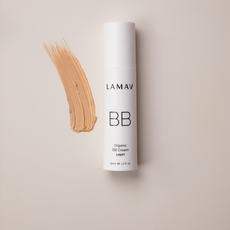5 Mistakes To Avoid When Applying A Body Moisturiser
Body moisturisers can deliver a delightful range of benefits to our complexion. Though we are cutting ourselves short when we aren’t applying them properly - whether it’s by missing areas, applying them at the wrong times, or only using them when our skin is dry. With all the advantages that come hand in hand with a body moisturiser, we can nurture our skin health by simply kicking a few habits to the curb.
Want to take full advantage of your skin-hydrating routine? Here are 5 mistakes to avoid when applying a body moisturiser
First Exfoliate
By applying a body moisturiser to bone-dry skin, we aren’t unlocking the product’s full potential. Without exfoliating first, the dead skin cells can form a barrier to stop moisturisers from unleashing their power.
To avoid making your body moisturising routine redundant, try buffing away your dead skin cells with a natural body scrub before using a body moisturiser.
Forgetting Other Body Parts
When we hydrate the body, we often fixate on moisturising our legs - particularly after a shave. And though it’s crucial to hydrate them to avoid dry skin, many other areas of the body often get neglected, such as the neck and back.
When applying a body moisturiser, be mindful of these other regions and be sure to give them a dose of hydration whenever you can.
As for our hands, it’s worth investing in a separate product that can seep into the cracks to deliver a range of nutrients - such as La Mav’s Vitamin C Hand Cream. The product features licorice root, coenzyme Q10, and hyaluronic acid to repair and moisturise, while the vitamin C and licorice root work to minimise age spots and other signs of ageing.
Moisturising At The Wrong Time
It’s best to moisturise the skin at certain times of the day to yield the best results. For example, applying a body moisturiser straight after a shower can do wonders for maintaining skin hydration.
If we apply a moisturiser to our damp skin after a wash, we can lock in the moisture from the shower and maintain a good level of hydration. Plus, since hot showers can suck the moisture from the skin, establishing this post-shower habit can be a great way to fight off dryness.
Not Switching Moisturisers As The Seasons Change
As the weather and conditions change throughout the year, so do our skincare needs. The cooler and dryer conditions of the year may have warranted a thicker moisturising lotion - though as we transition into the warmer months, switching to a much lighter hydrating cream may be the best choice. This is because the conditions don’t dry out the skin as rapidly as it does in Winter, meaning that our skin can hold onto its moisture for longer.
La Mav’s Omega 3 Body Oil is a worthy skin-hydrating tool, helping to keep dry skin at bay while delivering a healthy shine. Packed with a blend of natural oils, such as chia seed oil, tamanu oil, sea buckthorn oil, rosehip oil, and vitamin E, the product works to deliver the skin with lasting nourishment, while promoting a firm and smooth complexion.
To use the Body Oil, warm a small amount between the palms and apply it to damp skin. Otherwise, apply a few drops to the bath and allow the skin to soak in the nutrients.
Click here for the Hand And Body Hydration Duo, including the Vitamin C Hand Cream and Omega 3 Body Oil - working to deliver our skin with a healthy glow year-round. The pack is available for a limited time only.
Using Too Much
As they say - everything in moderation. Moisturiser is still a vital aspect of an everyday skincare routine, though using amounts consistent with your skin's needs is much more beneficial than going overboard. For the best results, stick to coin-sized doses of your moisturiser - your skin will thank you!
*The information in this article can be applied to those with no skincare or healthcare conditions. Before altering your diet or skincare regime, speak with a healthcare professional.











